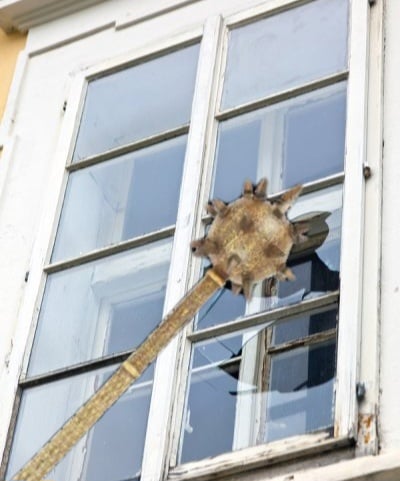Title photo by Kristen Rudd
There are over 7000 species of worm, of which 150 are widely distributed around the world!
Their bodies are made of many ridged segments covered in tiny bristle called ‘setae’, which help them grip the substrate allowing them to move forwards and backwards!

Photo by John Hallmén
They eat organic plant matter, fungi and other microorganisms!
Earth worms breathe through their skin, can breathe underwater and survive being submerged for quite some time!
They secrete mucus which helps them move through the soil and by contracting and relaxing different muscles, which alternates shortening and lengthening their bodies!

Photo by Aisling
Earthworms are mostly hermaphrodites (having both male and female sex organs), although recently a (nematode) worm was discovered that had 3 sexes, 1 part male, 1 part female, and 1 part hermaphrodite (it also lives in water 4 times saltier than the ocean and is immune to arsenic!)
One study found that worm sex can last between 69-200 minutes!
Both worms will get pregnant during sex, and each worm will use both their sex organs at the same time!

Photo by Reds.

Photo by Bob
Post exchange, each worm forms a collar-like clitellum around its body. This clitellum, filled with eggs and sperm, forms a cocoon when it’s pulled off. Inside the cocoon, fertilization occurs, resulting in hatchlings. via Bob
Each earthworm can produce up to 1000 baby worms every 6 months!
They are also capable of parthenogenesis, where they can reproduce asexually without the need for fertilisation
Earthworms will swallow tiny stones which they keep in their gizzard, these grind up vegetation and other organic matter to help digestion!
They have a closed circulatory system (like humans) which has 5 pairs of aortic arches which work together like 10 hearts to circulate blood- pushing it in one direction, then pulling in the other. (Most invertebrates have a simple pumping of fluids around an open system, which washes inside the body with blood extracting and exchanging nutrients and waste)

Earthworm Dissection by threeflowersphotography
Earthworms are Soil Engineers, their burrowing mixes soil, aerates substrate and converts complex organic matter into earthworm poo, which is then used by plants. They are critical to our growth of food and trees, without them soil density would increase, reducing the ability of roots to take up water and breathe!

Photo by John Glover
Earthworms have also been observed exhibiting social behaviour by forming herds and making ‘group decisions’ by using touch to influence each other!
…[They] tested how the worms affected each other’s behaviour, investigating whether the worms use either chemical signals or touch to decide which chamber to move to…[Results] indicated that the worms did not leave a chemical trail behind them that communicated their direction of travel… …suggesting that they used touch to communicate where they were going. Source
Now give our worm friend a kiss!

Photo by Dave Buckley
All info from here and here, unless otherwise stated
Disclaimer! I’m not an expert, I just like learning and sharing fun things…any mistakes, leave a comment and I’ll edit, Cheers!
edit, added (nematode) for clarification
One study found that worm sex can last between 69-200 minutes!
giggles
Great post! It’s also worth noting that earth worms are not native to the United States and are harming the forests by changing the make up of the soil and eating leaf litter required for tree seeds to germinate.
Thanks for the link, some interesting snippets…
At least 70 imported earthworm species have colonized the continent
These transplants are more likely to consume above ground leaf litter than native earthworms, altering habitat quality in a way that can hurt native plants, amphibians, and insects.
They found alien earthworm species in 97% of studied soils across North America, with alien occupation higher in the northern part of the continent and lower in the south and west.
In the northern broadleaf forests of the U.S. and Canada, alien earthworms’ impact on soil stresses trees such as sugar maples by altering the microhabitat of their soils. This, in turn, sets off a string of food web impacts that help invasive plants spread. Ironically, for a creature synonymous with improving soil, some alien earthworms may alter soil properties such as nutrients, pH, and texture, leading to poorer quality crops, among other impacts.
It never ceases to amaze me how humans can fuck up native ecosystems by introducing non native species…
Yes, we really didn’t understand what we were doing, but at least we do now. Asian jumping worms are the next threat. I’ve been trying to be very careful not to introduce them to my garden.
I was really hoping that the Asian Jumping Earth Worms actually jumped, like those beans with the bugs inside
Posts like yours deserve more recognition, i enjoyed reading this quality post!
Thank you! I’ll never make the front page, but I enjoy doing them and I end up learning loads, which is always the most important bit! 😀
There are giant earthworms in Australia that grow up to 3 meters. They are also very endangered because of humans.
Also in South Africa they have a species which is ENORMOUS!!
It averages about 1.4 meters (4.5 feet) in length, but can reach a length of as much as 6.7 meters (22 feet) and can weigh over 1.5 kilograms (3.3 pounds) wikipedia
They are also the Guiness World Record holders for being the biggest (so far) discovered!
I’m probably going to do a specific post on giant worms, because why not?
Damn. I’m not scared of earthworms, but a 6-meter one might make me take pause for a little.
Fortunately they’re slow moving! I did imagine that they’d have the girth of a python or anaconda, but they seem to be around 2 inches or so…and as a lot of creatures like this, they’re either at risk or endangered
I always try to save some, when they lay around the walkway after long / heavy rainfalls. They’re so slow & squishy.
One thing I left out (and I do this myself) is that when you pick them up to rescue them and they start wriggling, they’re reacting to the salts on your skin, and not in a good way… 😬
I suppose a solution could be to wet your hands before handling them…or wear thin latex gloves, but then we’d look like crazy-worm people
Yeah i noticed that when i was little. I lived near Schwarzwald in Germany and lots of these worms around.
A teacher taught us how to handle them and i always try to not use my bare hands.
Your teacher sounds awesome, I always remember the people who show and teach us about wildlife especially the local varieties…it’s like having your own David Attenborough!
She was and she also had a way to teach things, telling little stories around things. It was an adventure, when we went outdoors to learn stuff.
I remember hearing as a kid, they had 4 hearts. So if you accidentally cut one in half when digging in the garden, it would live on as 2 seperat worms.
Is that true?
Partially…they can survive and regenerate if it’s towards the end part, towards the middle and the head you’ll end up with a dead worm
Regeneration depends on the species of earthworm and the amount of damage to the worm where it has been cut, but many worms are able to regenerate and replace a lost tail.
They cannot survive if the front part of their body between the head and saddle is cut (where much of their major organs are). It’s also a common misconception that if you cut them in half they can make two new worms, unfortunately they will likely just die (or potentially the head end may survive). source
But please don’t go around experimenting with them!
Thanks for the answer. Haha don’t worry, I just remember hearing it some 20 years ago, and I never questioned it till now.
Wow they are more complex than I imagined!
My thought when I was reading up on them, and there’s a lot of things I left out too!
When I do these posts I sometimes think ‘pick something easy, something nondescript’…then I start reading up and I’m amazed at how complex and interesting these ‘nondescript’ creatures are, how weird and original their sex lives are, who’d have thought worms are social and can do group actions?
deleted by creator



